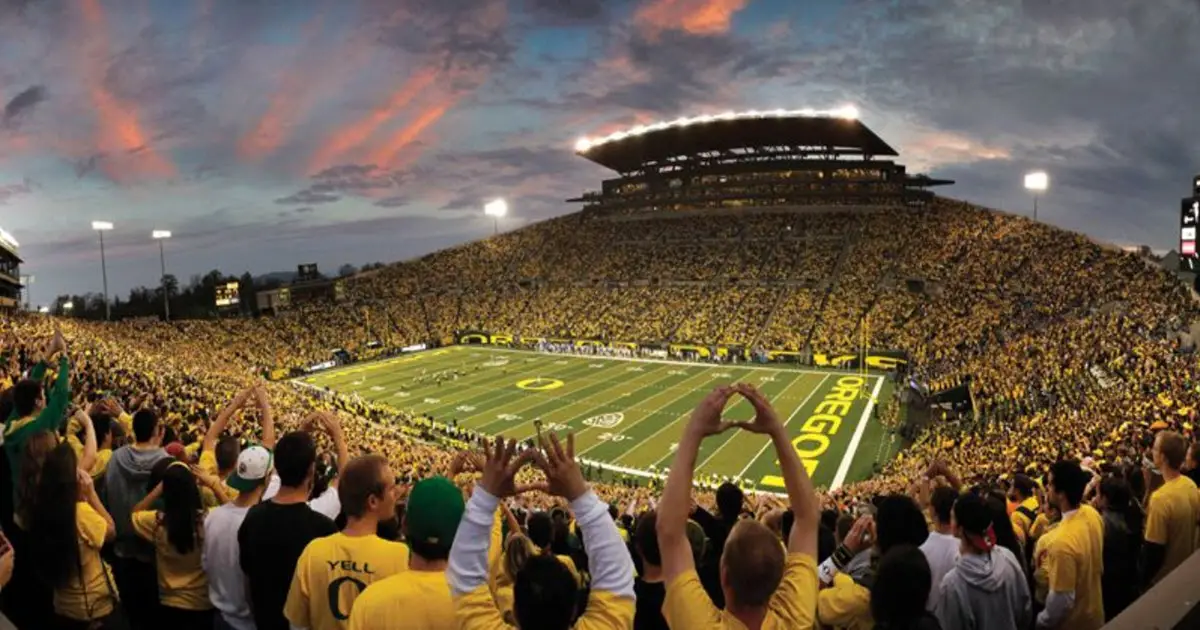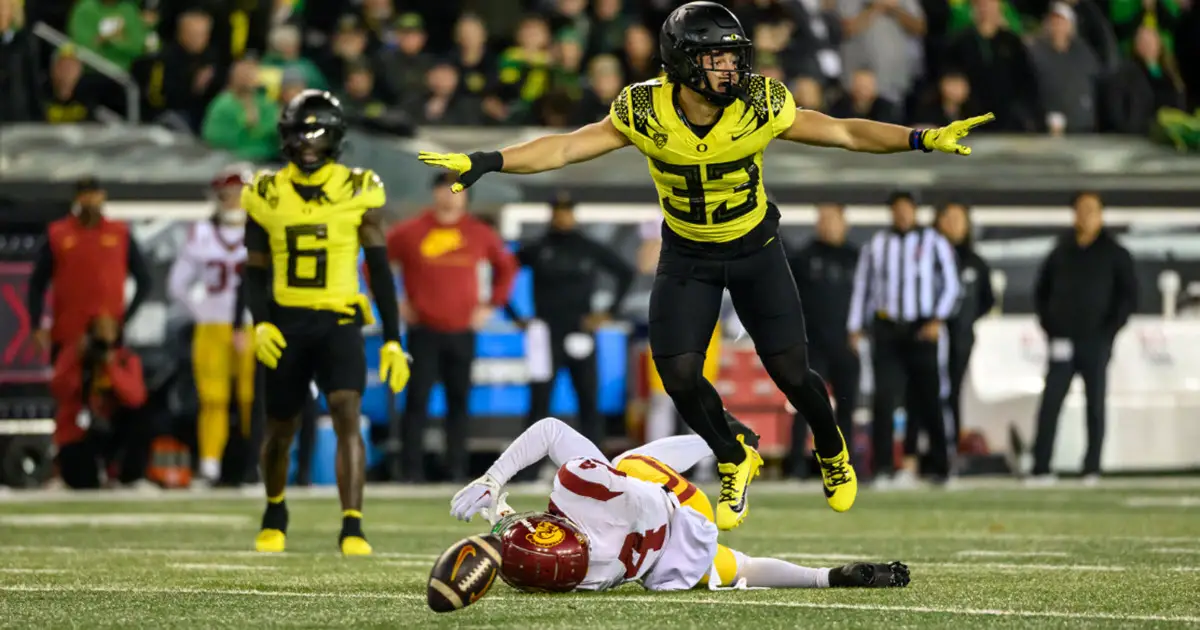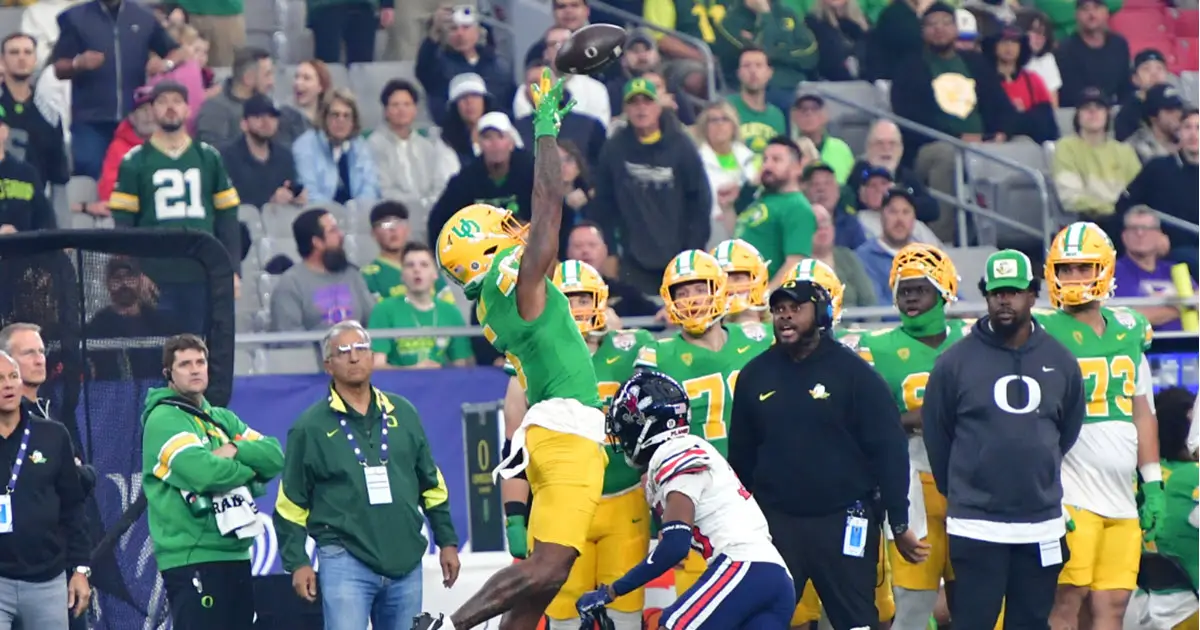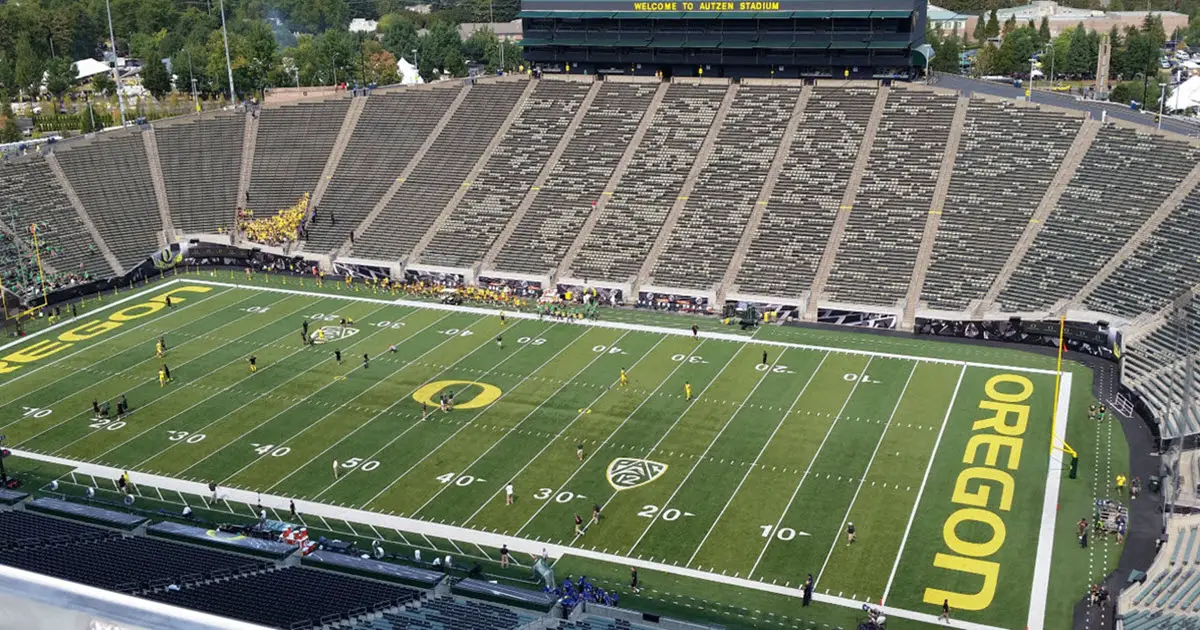…and build it back better.
There has never been an NCAA recognized champion of college football! Not ever. Not even once.
Mr. FishDuck, when pulled away from his fun with online real money casino had to ponder this one with me, and acknowledge how the champion of college football for the year 2023, crowned by a playoff in 2024, is Michigan. But, the Michigan Wolverines are the CFP champion, not the NCAA champion, just like the South Dakota State Jackrabbits are the FCS champion.
College football changed dramatically in 1984. Wikipedia tells us:
On June 27, 1984, the U.S. Supreme Court ruled in NCAA v. Board of Regents of the University of Oklahoma that the NCAA’s television plan violated the Sherman Antitrust Act. As a result, individual schools and athletic conferences were freed to negotiate contracts on their own behalf. The year after the Supreme Court decision, nearly 200 games were televised, compared to the previous year’s 89.
The NCAA argument to retain control of TV broadcasting was that without controls, too many games would be aired, and attendance would decline. It was an argument that many schools found aggregable. On Aug, 2, 1986, Randy Minkoff of UPI wrote:
‘I think the overexposure of college football on television is one of the most serious problems we face,’ says Big Ten commissioner Wayne Duke, a veteran in dealing with the networks on contracts. ‘I think you have to be concerned about the drop off in attendance and the problems you face with too many games on television.’
And, in the same article:
‘We had nine different starting times one year,’ said Illinois coach Mike White. ‘How can you bring order to that when you have different times for training table, workout, sleep?’
Control of college football, in many ways became the province of the TV networks. The beneficiaries were fans who watched the games from home, conference administrators and college athletic budgets, to the detriment of fans who went the games in person at odd starting times and endured TV times out, and the players who had their weekly schedules disrupted for the same reason.

Changes did not impact attendance at Autzen!
The naysayers were wrong, so wrong. Greater television exposure did not decrease attendance at games. A whole new group of formerly occasional fans watched their teams on TV, became rabid, and had to be there. And the money from additional TV games poured into the conferences and schools. The players wanted their share, and some are getting it through NIL.
In search of even more TV revenue for themselves, conferences have realigned to where there were six major conferences, then without the ACC, five, and now, probably three or two, those with the best of their own TV broadcasting.
In a letter to players on December 19, 2023, NCAA commissioner Charlie Baker provided insight to a proposal under discussion with NCAA members. He said: “. . . my proposal would reimagine a subdivision within Division I for institutions that have the most resources to invest in their student athletes.” Maybe Charlie is reimagining of conference realignment so that the ultimate winner of this new “subdivision within Division I” will be an NCAA recognized champion of college football.
And why not? The NCAA successfully crowns undisputed champions of basketball, baseball, track and field, golf and a host of other sports. Why should football be different? I’m guessing it will come down to TV revenue and the refusal of conference administrators to give up control of that income source and of the determination of the makeup of teams in their conferences to the NCAA. But, for a moment, let’s consider how this new “subdivision within Division I” might take shape, should it ever happen.
First, how many teams qualify as “institutions with the most to invest in student-athletes.”?
It would be wonderful to choose a number that makes for a better playoff system. The BCS/CFP first chose two playoff teams, then four, now 12. My thought is that next year’s 12-team “invitational” playoff chosen by the CFP committee will be every bit as flawed as the four-team playoff was this year, at least for those teams that are left out.

Teams that routinely underperform will still complain about their seeding. (Photo by Craig Strobeck)
With the proposed 12-team invitational in place for next year, teams No. 1-4 having a first-round bye, teams No. 5 and No. 6 will be angry because they were left out of the first four and afforded the prospect of playing a team in round two that had the prior weekend off. And, teams No. 13-15 will be just as angry about not being part of the included top 12 teams chosen by the committee as teams No. 5-8 were this most recent playoff. The answer is to settle the controversy on the field during the entire season, without a committee putting the icing of their choice on the cake baked during the season.
Here’s an “ideal” solution. The NCAA should make a list of the top 80 teams in college football. For example, use the “College football rankings composite” compiled by Massy Ratings. By that measure the last four in are Purdue, Texas St., Colorado, and Bowling Green. The first four out are Arkansas, Georgia State, Syracuse, and Michigan State. That’s for this year. But if all the schools agreed in advance that the first delineation of “institutions with the most to invest” that make up Subdivision I would be made for the year 1987 based on their performance in 1986, and the final Massey Ratings would be the determining factor of the top 80 teams for that next year only, who could complain?
I chose the number 80 for reasons of symmetry. Imagine 80 teams in eight ten-team conferences where every team plays a nine-game round-robin conference schedule. An actual conference champion is determined at the end of regular season play based on conference games only. Tie breakers would be head-to-head competition and where there is a tie of three or four then use the outcomes of games against the next team that was not in the tie. Nonconference games against members of other conferences or teams in a lower subdivision would not count toward the conference championship.
The football champion of the year would be determined by a playoff of the eight conference champions. And to provide an interconference competitive element, the teams that finished 2-10 in regular season would play the teams that finished the same in another conference, so that the first round of the championship playoff between the top teams would include an interconference competition between all 80 teams. More than ample games to satisfy all the bowl committees with teams from their vicinity to draw more fans.
But there is more. There is another Subdivision of the next 40 teams on the Massey Ratings, 81-120. Those 40 teams would be in four 10-team conferences. Those 40 play nonconference games against teams in the top 80. Every year the bottom team of the eight conferences in Subdivision I would drop down to the lower subdivision and the top two teams in each of the four lower subdivision conferences would move up to Subdivision one.

Big games produce big plays, such as this catch by Traeshon Holden. (Photo by Tom Corno)
This flexibility between the two Subdivisions makes every conference game meaningful. Even the last game of the season will have significance, not only to the teams at the top of the conference, but to the teams at the bottom of the conference.
The number 80 is probably too large for teams that would have the resources to compete in Charlie Baker’s Subdivision I. The only other number that provides total symmetry with a nine-game conference schedule is 40. Again, using the Massey Rating the last four in would be Memphis, Texas Tech, North Carolina and Tulane, and the first four out would be Kentucky, Miami FL, Northwestern and Boise State.
A playoff for a 40-team Subdivision I of four conferences could include teams one and two of each 10-team conference so there would be an eight-team playoff.
There are several take-aways here for college football decision makers:
1. There needs to be a single football authority, and the best candidate is the NCAA.
2. There needs to be symmetry in conference alignment, hopefully with a geographical element. Symmetry meaning every conference has the same number of teams, and that the number of conferences be divisible by 4.
3. Selection of playoff teams through on-field competition where symmetry pits every team against every other team is far superior to an invitation by a committee, no matter how qualified and fair the committee members may be.
4. If there is a Subdivision I of the financial “Haves”, there should be flexibility that provides incentive for the teams left out of Subdivision I on the first go round to move up, and for the teams included in Subdivision I to stay there. An annual movement of teams at the bottom of the Subdivision I conferences out, and moving the best teams left out in, creates TV interest in games that otherwise would have low viewer numbers.
Unfortunately, determination of a college football champion in a manner that makes common sense will be strongly opposed by those who have the most to lose, conference administrators.

Oregon would play Arizona again in the suggested conference? (Photo by Vasco Dixon)
P.S. Using the 80-team Subdivision I model the 10-team Western Conference by Massey Rating would be:
3. Washington
4. Oregon
16. Arizona
21, Oregon State
22. USC
44. Boise State
58. California
62. Washington State
63. Fresno State
Cutting it back to 40 teams and bringing in the nearest geographic schools would probably bring in:
28. Utah
29. Iowa
35 Iowa State
38. Texas Tech
Doesn’t this make sense to you? Share your thoughts in the only civilized, free, Oregon Football message board out there, the Our Beloved Ducks forum.
Mike Whitty
Eugene, Oregon
Top Photo by Kevin Cline
Related Articles:
Oregon Enters Playoffs Better Off Than Last Year
Will The Coaching Carousel Kill Oregon's CFP Chances?
The Playoff Formula Hasn't Changed
Oregon Aims to Bury Dawgs, Punch Playoff Ticket in Rivalry Clash
Huskies Are the New Beavers, Stay In Your Lane Kiffin, and the Civil Apple Cup War
Oregon Football: The X-Factor Vs. Washington

The senior Mike Whitty, age 84, is not the commissioner for Lane County football and basketball officials, as that is his son, Mike Whitty. A retired attorney, Mike Whitty, Sr., grew up in Coos Bay, and played football four years for Pete Susick at Marshfield High, during the time of the then Big “A” school’s three successive state championships, 1954-56.
A serious golfer, Mike has been the medalist in three divisions of the Oregon Coast Invitational at Astoria G & CC. He qualified and played in the USGA Sr. Amateur at Prairie Dunes, KS in 1995. His education: two years at USAF Academy, 1961-63. Oregon degrees, BS ’65, JD ’68.

